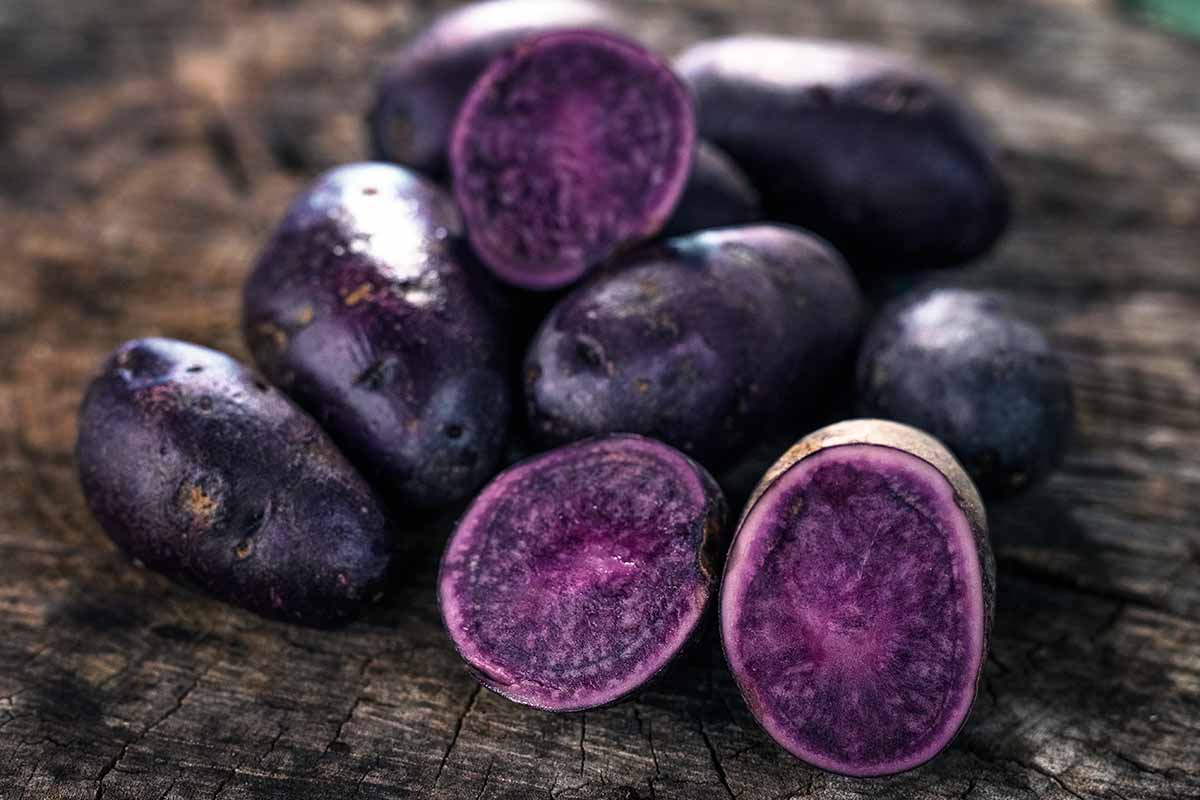
Purple potatoes might sound like something from a fairy tale, but they're very real and packed with surprises. These vibrant tubers aren't just pretty; they bring a lot to the table. Why are purple potatoes purple? It's all thanks to anthocyanins, the same antioxidants found in blueberries. These antioxidants help fight inflammation and boost your immune system. But that's not all. Purple potatoes also have more fiber than regular potatoes, making them a great choice for digestion. They can be baked, mashed, or even turned into colorful fries. Ready to learn more? Let's dig into 25 fascinating facts about these colorful spuds!
Key Takeaways:
- Purple potatoes are not only visually stunning but also packed with nutrients, making them a healthy and colorful addition to any diet.
- These vibrant tubers offer a range of health benefits, from promoting heart health to aiding in weight management, and can be used in a variety of delicious dishes.
What Are Purple Potatoes?
Purple potatoes are not just eye-catching; they pack a punch in terms of nutrition and flavor. Originating from South America, these vibrant tubers have been cultivated for centuries. Let's dive into some fascinating facts about these colorful spuds.
-
Natural Pigment: The striking purple color comes from anthocyanins, antioxidants also found in blueberries and red cabbage.
-
Varieties: There are several types, including Purple Majesty, Purple Viking, and All Blue.
-
Nutrient-Rich: They are high in vitamins C and B6, potassium, and fiber.
-
Low Glycemic Index: Purple potatoes have a lower glycemic index compared to white potatoes, making them a better option for blood sugar control.
-
Antioxidant Powerhouse: The anthocyanins in these potatoes help fight inflammation and may reduce the risk of chronic diseases.
Health Benefits of Purple Potatoes
These tubers are not just pretty; they offer numerous health benefits that make them a great addition to any diet.
-
Heart Health: The potassium content helps regulate blood pressure, promoting cardiovascular health.
-
Immune Boost: High levels of vitamin C strengthen the immune system.
-
Digestive Health: The fiber aids in digestion and helps maintain a healthy gut.
-
Anti-Cancer Properties: Some studies suggest that anthocyanins may have anti-cancer effects.
-
Weight Management: Low in calories and high in fiber, they help you feel full longer, aiding in weight management.
Culinary Uses of Purple Potatoes
Purple potatoes are versatile and can be used in various dishes, adding both color and nutrition.
-
Mashed Potatoes: They make for a visually stunning and delicious mashed potato dish.
-
Roasted: Roasting enhances their natural sweetness and brings out a nutty flavor.
-
Salads: Add them to salads for a pop of color and a nutritional boost.
-
Chips: Purple potato chips are a healthier alternative to regular potato chips.
-
Soups: They add a unique color and flavor to soups and stews.
Growing Purple Potatoes
Interested in growing your own? Here are some facts to get you started.
-
Climate: They thrive in cooler climates and are typically planted in early spring.
-
Soil: Well-drained, fertile soil is ideal for growing these tubers.
-
Spacing: Plant them about 12 inches apart to give them room to grow.
-
Watering: Consistent watering is crucial, especially during the growing season.
-
Harvesting: They are usually ready to harvest about 90-120 days after planting.
Fun Facts About Purple Potatoes
Here are some quirky and fun facts that you might not know.
-
Ancient Roots: They have been cultivated for over 7,000 years in the Andes Mountains.
-
Royalty Favorite: In ancient Peru, they were considered food for the Inca kings.
-
Color Stability: Unlike some other colorful vegetables, their vibrant hue remains even after cooking.
-
Symbolism: In some cultures, purple potatoes symbolize wealth and prosperity.
-
Cultural Significance: They are often used in traditional dishes during festivals and celebrations in South America.
The Final Bite on Purple Potatoes
Purple potatoes aren't just pretty; they're packed with nutrients. These vibrant tubers boast high levels of antioxidants, especially anthocyanins, which help fight inflammation and disease. They also provide a good dose of fiber, vitamins, and minerals like potassium and vitamin C.
Cooking with purple potatoes is a breeze. Whether you roast, mash, or fry them, they add a splash of color and a unique flavor to any dish. Plus, their health benefits make them a smart choice for anyone looking to boost their diet.
Next time you're at the grocery store, grab some purple potatoes. They're not just a feast for the eyes but also a boon for your health. Give them a try and see how they can brighten up your meals and your well-being.
Frequently Asked Questions
Was this page helpful?
Our commitment to delivering trustworthy and engaging content is at the heart of what we do. Each fact on our site is contributed by real users like you, bringing a wealth of diverse insights and information. To ensure the highest standards of accuracy and reliability, our dedicated editors meticulously review each submission. This process guarantees that the facts we share are not only fascinating but also credible. Trust in our commitment to quality and authenticity as you explore and learn with us.


